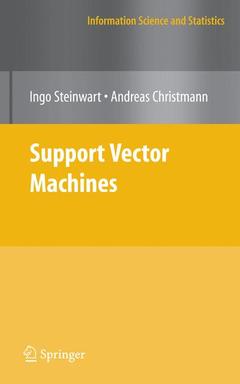Description
Support Vector Machines, 2008
Information Science and Statistics Series
Authors: Steinwart Ingo, Christmann Andreas
Language: English
Subjects for Support Vector Machines:
163.51 €
In Print (Delivery period: 15 days).
Add to cartPublication date: 10-2014
603 p. · 15.5x23.5 cm · Paperback
232.09 €
Subject to availability at the publisher.
Add to cartPublication date: 08-2008
603 p. · 15.5x23.5 cm · Hardback
Description
/li>Contents
/li>Biography
/li>Comment
/li>
Ingo Steinwart is a researcher in the machine learning group at the Los Alamos National Laboratory. He works on support vector machines and related methods.
Andreas Christmann is Professor of Stochastics in the Department of Mathematics at the University of Bayreuth. He works in particular on support vector machines and robust statistics.
Explains the principles that make support vector machines a successful modelling and prediction tool for a variety of applications
Rigorous treatment of state-of-the-art results on support vector machines
Suitable for both graduate students and researchers in statistical machine learning
Includes supplementary material: sn.pub/extras




